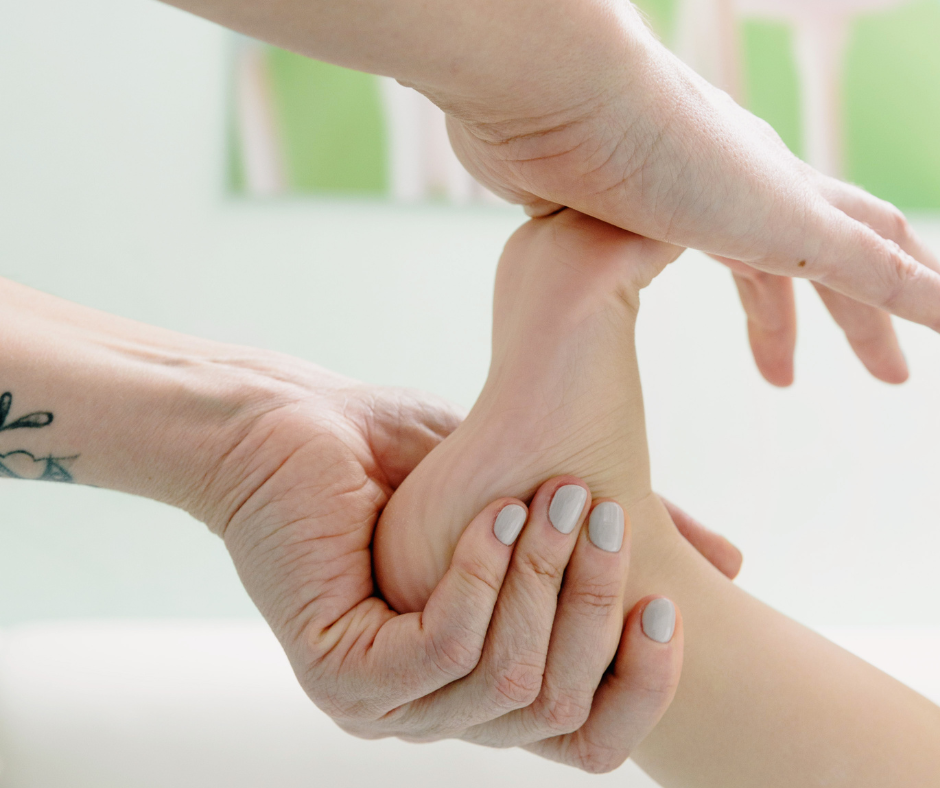“Is That Normal?” A Parent’s Guide to Foot & Ankle Deformities

As a parent, you watch every milestone with a lot of joy…and, more often than not, a little bit of concern! You want to ensure your child is growing up healthy and strong, so it’s common to have questions about your child’s feet:
Is their in-toeing just a ‘phase?’ Are their flat feet ‘normal?’
It can be tough to tell the difference between a minor issue that will resolve on its own and a potential problem that needs professional attention. That’s why Foot & Ankle Associates of Cleveland has put together the following guide! Read on so you know what’s ‘normal’…and what’s not.
Common Childhood Foot Conditions
While many variations in children’s feet are normal, a few common conditions may require a podiatrist’s attention.
- Pediatric Flatfoot (Pes Planus): It’s normal for toddlers and young children to have flat feet, as their arches typically develop by age 6 or 7.
- However, if flat feet persist and are associated with pain, fatigue, or clumsiness, it may be a condition known as flexible flatfoot that could benefit from support.
- In-toeing (“Pigeon Toes”): This is when a child’s feet point inward when they walk.
- In most cases, it’s a normal developmental variation that self-corrects as the child grows and their coordination improves.
- Clubfoot: This is a more serious, congenital deformity where one or both feet are turned inward and downward.
- The good news is that with early intervention, clubfoot can be very successfully treated, most often using the gentle stretching and casting of the Ponseti method.
How to Spot Potential Issues: A Parent’s Checklist
You are your child’s first line of defense when it comes to their foot health. Keep an eye out for these common signs that might indicate an underlying issue:
- [✔] Uneven Shoe Wear: Are the soles of their shoes wearing down unevenly, especially on one side?
- [✔] Frequent Tripping or Clumsiness: Does your child seem to trip over their own feet more often than their peers?
- [✔] Complaining of Pain: Don’t dismiss complaints of foot, ankle, or leg pain as just “growing pains,” especially if the pain is persistent or follows physical activity.
- [✔] Reluctance to Participate: Have they started to avoid activities they once enjoyed, like running or sports?
- [✔] Visible Deformities: Do you notice their feet turning inward or outward, or that their arches seem unusually low or high?
How a Podiatrist Can Help
Early intervention can have a lasting positive impact on your child’s development. A podiatrist can:
- Provide an Accurate Diagnosis: Through a physical exam and a gait analysis, we can determine the exact nature of the issue.
- Develop a Personalized Treatment Plan: For many conditions, the solution is simple and non-invasive.
- Treatment often involves specific stretching exercises, recommendations for supportive footwear, or the use of custom orthotics to provide the support and alignment their growing feet need.
Trust Your Parental Instincts!
If something about your child’s feet or the way they walk seems off, a professional evaluation can provide peace of mind and, if needed, a clear path to treatment.
Call Foot & Ankle Associates of Cleveland in Solon, Ohio, at (440) 903-1041 or contact us online to schedule a consultation. Dr. Craig B. Frey, Dr. Megan L. Oltmann, Dr. Jim Swienconek, and Dr. Courtney Yoder treat patients in Portage, Geauga, Cuyahoga, and Summit Counties, proudly serving Solon, Aurora, Bedford, Chagrin Falls, Hudson, Macedonia, and Twinsburg.







